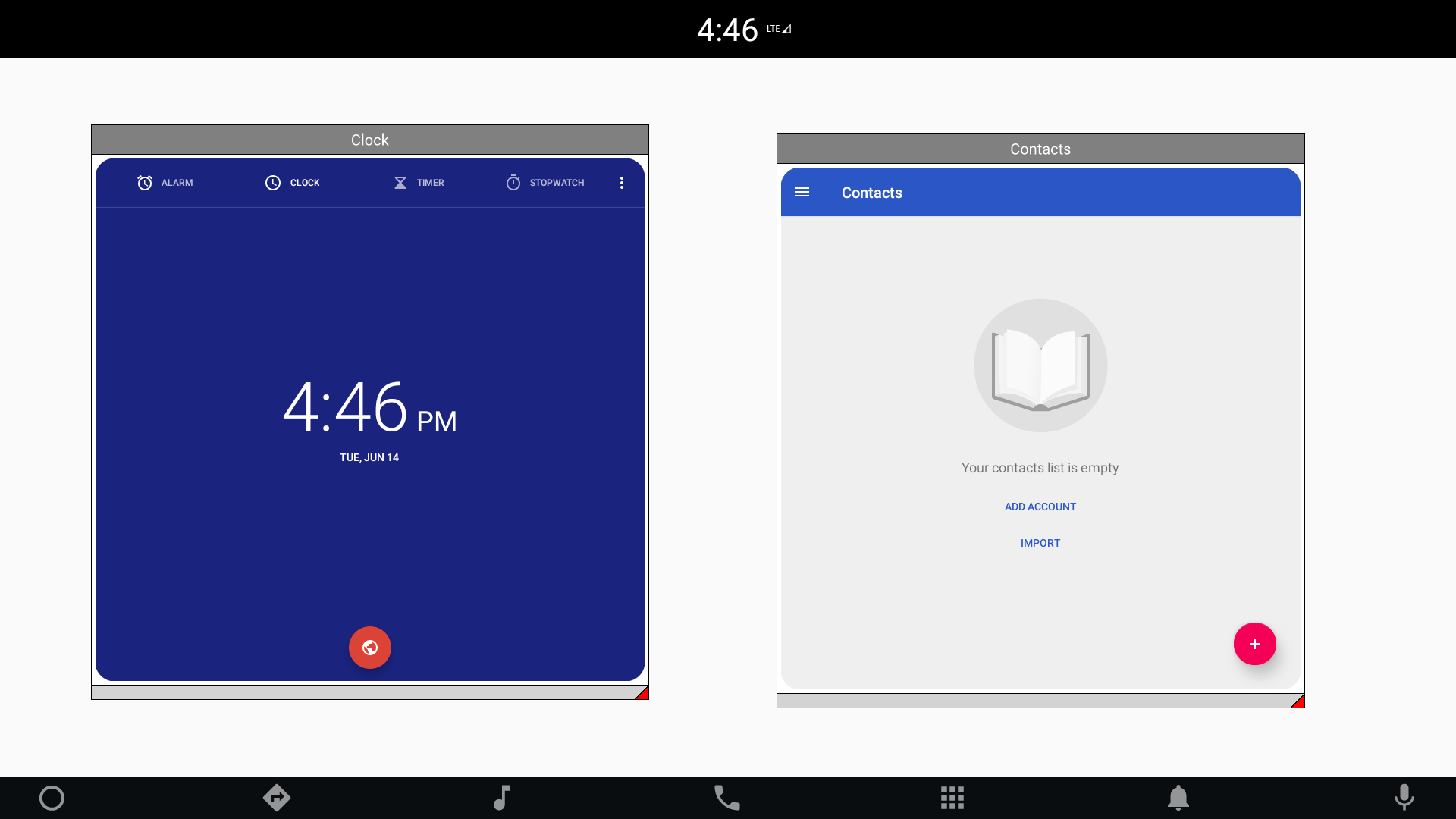C
Embedded Clock and Contacts Apps
An app that embeds the Clock and Contacts apps in floating window using the Qt for Android Automotive ActivityView type.

Building and deploying the example
See specific steps relating to building and deploying Qt for Android Automotive examples.
Including the API
To use the ActivityView plugin in Qt Quick application, first, we have to import the Qt for Android Automotive ActivityView module in QML:
import QtAndroidAutomotive.ActivityView
Wrapping an application inside the floating window
In the example, we implement a floating window QML type by using a draggable rectangle. This type is defined in FloatingWindow.qml and it encapsulates the visual appearance and behavior.
Next, in Main.qml, we will declare a floating window component, ActivityViewWindow, based on FloatingWindow.
component ActivityViewWindow: FloatingWindow { id: activityViewWindow
Using ActivityView
The ActivityView QML API related functionality is covered by the ActivityView item placed inside ActivityViewWindow, and by setting parameters of each embedded Activity.
ActivityView { id: activityView anchors.fill: parent anchors.margins: applicationWindow.activityMargin radius: 25 usePlaceholder: activityViewWindow.resizing || activityViewWindow.moving placeholder: Text { id: activitySymbol horizontalAlignment: Text.AlignHCenter verticalAlignment: Text.AlignVCenter font.pixelSize: 64 } BusyIndicator { anchors.centerIn: parent visible: activityView.status !== ActivityView.Status.Started } }
With the ActivityViewWindow component we can now define two floating windows, which will wrap the Activities of Android Applications. In this example we are embedding the Clock and Contacts applications inside these two windows.
ActivityViewWindow { id: firstWindow title: "Clock" packageName: "com.android.deskclock" symbol: "🕑" visible: false } ActivityViewWindow { id: secondWindow title: "Contacts" packageName: "com.android.contacts" symbol: "👤" visible: false }
Available under certain Qt licenses.
Find out more.
